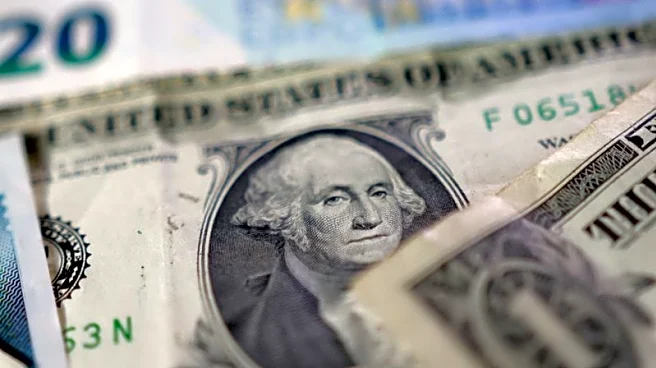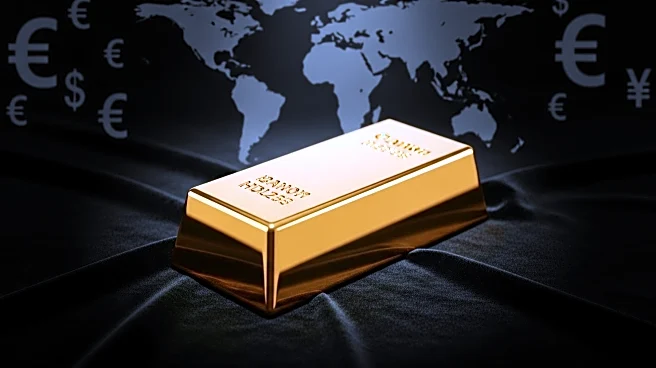What is the story about?
What's Happening?
Gold prices have reached new record highs in early October 2025, surpassing $4,000 per ounce as investors flock to safe-haven assets amidst global uncertainty. The surge in gold prices is driven by expectations of U.S. Federal Reserve interest rate cuts, geopolitical tensions, and a weakening U.S. dollar. The Federal Reserve's recent rate cut in September and anticipated further cuts in October and December have bolstered gold's appeal as a non-yielding asset. Additionally, the ongoing U.S. government shutdown and President Trump's comments on potential Fed changes and new tariffs on China have increased demand for gold as a hedge against policy risk. Central banks, including China's, continue to purchase gold, further supporting its price.
Why It's Important?
The rise in gold prices reflects broader economic and political uncertainties impacting the U.S. and global markets. As the Federal Reserve considers further rate cuts, the opportunity cost of holding gold decreases, making it more attractive to investors. This trend indicates a shift in sentiment towards safe-haven assets amidst fears of economic instability and geopolitical tensions. The U.S. government shutdown and trade disputes add layers of complexity, potentially affecting economic data and market stability. The strong demand for gold-backed ETFs and central bank purchases underscores the metal's role as a key portfolio diversifier, highlighting concerns over currency and economic risks.
What's Next?
Looking ahead, gold prices are likely to remain supported by ongoing geopolitical tensions and U.S. fiscal and monetary policy developments. Key economic data releases and Federal Reserve meetings will be closely monitored, as they could influence market sentiment and gold's appeal. The potential for further rate cuts by the Fed and continued global political instability may sustain gold's upward trajectory. However, any unexpected policy shifts or a stronger U.S. dollar could trigger profit-taking and impact gold prices.
Beyond the Headlines
The surge in gold prices may have long-term implications for global financial markets, as investors increasingly seek stability in precious metals amidst economic and political uncertainties. The trend could influence central bank policies and international trade dynamics, as countries adjust their reserves and strategies in response to shifting market conditions. Additionally, the strong demand for gold may impact other sectors, such as jewelry and technology, where gold is a key component.
AI Generated Content
Do you find this article useful?














